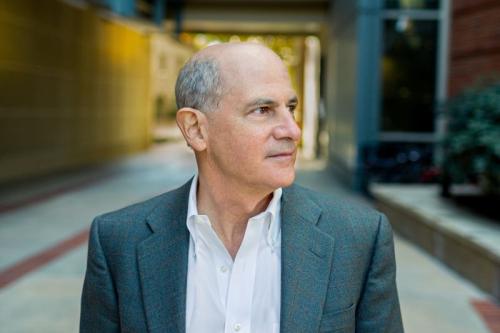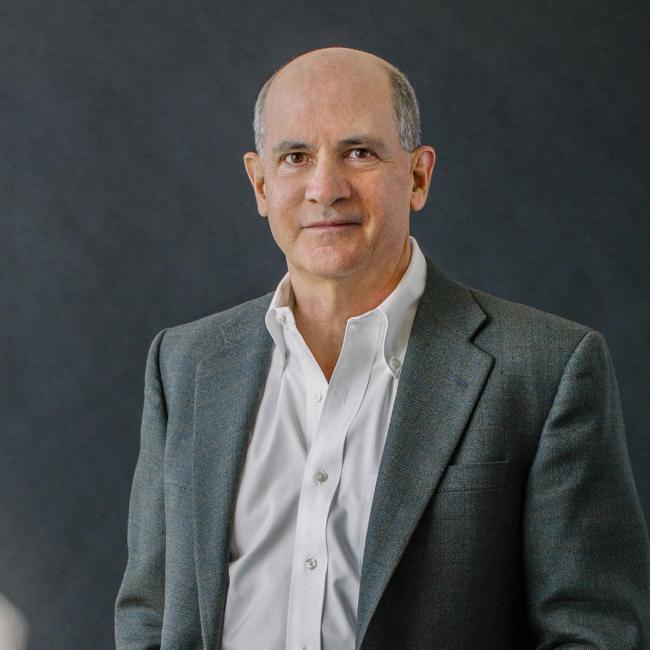
How exercise rejuvenates aging stem cells: a Q&A with Dr. Thomas Rando
For decades, Dr. Thomas Rando has been seeking methods to turn back the clock on aging. The goal of this work isn’t to put plastic surgeons out of business and it’s not to help a lucky few live forever – it’s a lot more reasonable than that.
What Rando’s working toward is a way to increase humans’ healthspan, that is to say, he aims to develop interventions to prevent age-related diseases and help people maintain their physical and mental fitness well into their 80s, 90s, or even their 100s.
A major focus of this research is stem cells, which can self-renew and give rise to all cell types found in the body. Stem cells play a critical role in maintaining tissue health and orchestrating recovery from injury throughout an individual’s life. However, with age, stem cells slow down and become less capable of repair.
A new study in Cell Stem Cell led by Rando and his colleagues Dr. Anne Brunet of Stanford University and Dr. Margaret Goodell of Baylor College of Medicine sheds light on how aging changes different types of stem cells at the molecular level – and how exercise can reverse this process.
Here, Rando, director of the Eli and Edythe Broad Center of Regenerative Medicine and Stem Cell Research at UCLA, breaks down the new findings and how they could pave the way for the development of therapies to prevent age-related diseases.
What questions does this paper answer?
The paper answers two fundamental and interconnected questions: Do the stem cells from different parts of the body undergo similar changes as they age? And does exercise, which is known to promote healthy aging, affect these changes in a similar way across these different types of stem cells?
How did you go about answering these questions?
For this study, we compared the muscle, blood and brain stem cells of four groups of genetically identical mice: old mice that ran on a wheel for three weeks; old mice that didn’t exercise over the same period; young mice that ran on a wheel for three weeks; and young mice that didn’t exercise for the same period.
If we were to compare the ages of the mice used in the study to human aging, the old mice would be the equivalent of 75-80 years old and the young mice would be 20-30 years old. After the three-week period, we used single-cell RNA sequencing to examine the molecular features of the muscle, blood and brain stem cells of these mice, as well as the supportive cells that make up the stem cells’ surrounding environments, which are called niche cells.
What are the key findings?
One major trend we saw across all the cells we studied from the aged mice was increased inflammation. This is important because inflammation is a driver of aging and it’s bad for stem cells’ function; it suppresses blood stem cells’ ability to regularly produce new blood and immune cells, and in brain and muscle stem cells, it limits their capacity to make new cells to regenerate tissue in response to damage.
However, in the stem and niche cells of the old mice that exercised, we saw reduced inflammation; exercise had actually reversed the changes caused by aging.
What excites you about these findings?
These new insights into how stem cells change in response to aging and how those changes can be reversed tell us something really intrinsic about how flexible aging is. The common thinking is that aging is sort of unidirectional, which, in many ways it is, but we can actually reverse some of the changes that come with age. We've shown that before in other papers and, in this paper, I think we show it quite clearly.
Another thing I love about this study is that it gave us the chance to look at multiple stem cell compartments. This is relatively unusual because mostly we researchers study the stem cells that we're good at looking at. But because this was a collaborative study with colleagues from Stanford and Baylor, we were able to leverage the unique expertise of each of our labs to get a more complete picture of stem cell aging across tissues.
Acknowledging that this is a study in mice, what could people who are eager to limit the effects of aging take away from this?
If we can extrapolate these findings to humans, they reinforce the idea that exercise is good for you and that you can exercise even as a very old person and get benefits that look like youthfulness. After just three weeks of exercise, we saw quite significant changes in the old mice.
So, to the extent that these findings are translatable to humans, I would say don't stop exercising or don't hesitate to start exercising – even later in life.
What are the next steps in the study?
Our next steps would be to take what we've learned about inflammation and ask: Can you get the same benefit without having to do all that exercise? Can we get these same results with something that's easier to do than running for three weeks?
Do anti-inflammatory drugs like ibuprofen or plant-derived molecules like antioxidants give you that same effect? We don’t know. For now, I wouldn’t recommend people to start taking ibuprofen every day, but if we could find something that was milder to reduce inflammation and confirm it has the same age-reversing effects, that would be compelling.
Notes
Authors
The first author of the new study is Ling Liu, an associate adjunct professor of neurology at the David Geffen School of Medicine at UCLA. Rando’s co-senior authors are Margaret A. Goodell, professor and chair of molecular and cellular biology at the Baylor College of Medicine, and Anne Brunet, a professor of genetics at the Stanford University School of Medicine.
Funding
This study was funded by the National Institutes of Health, the Howard Hughes Medical Institute, the Chan Zuckerberg Initiative, the Simons Foundation, Michele and Timothy Barakett, the Glenn Foundation for Medical Research and the U.S. Department of Veterans Affairs.
